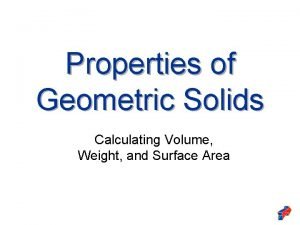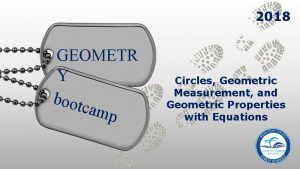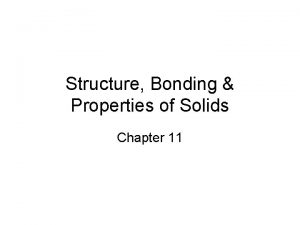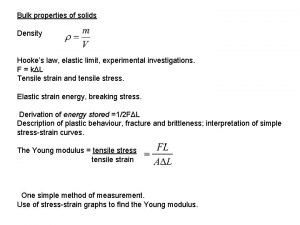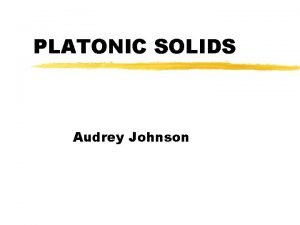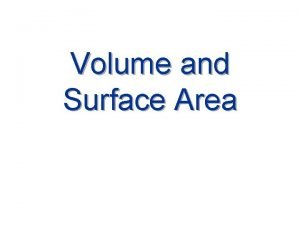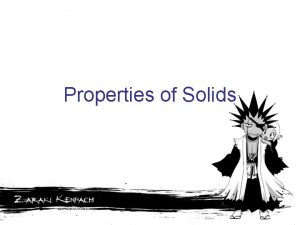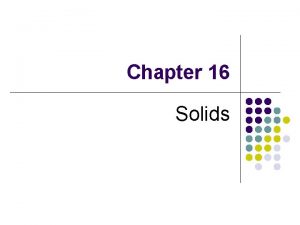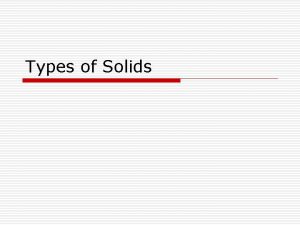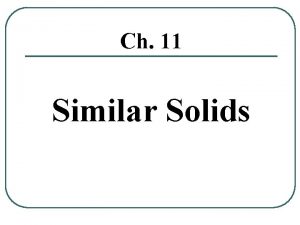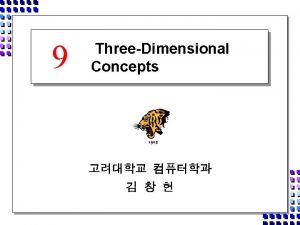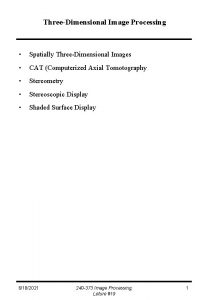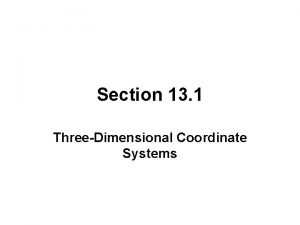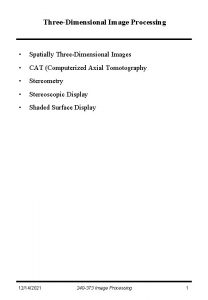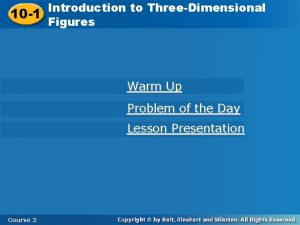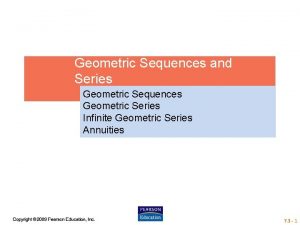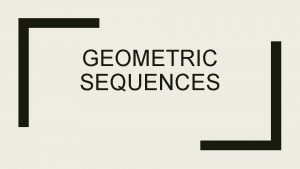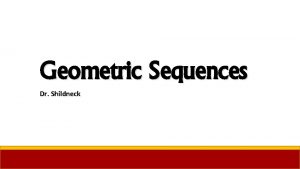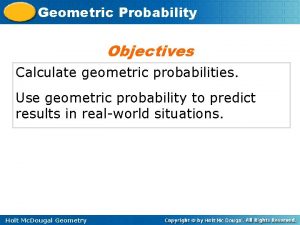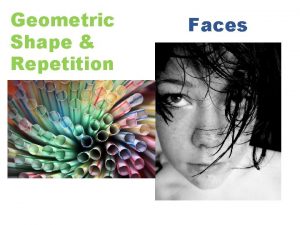Properties of Geometric Solids Geometric Solids are threedimensional




















- Slides: 20

Properties of Geometric Solids

Geometric Solids are threedimensional objects. • In sketching, twodimensional shapes are used to create the illusion of three-dimensional solids.

Properties of Solids Volume, mass, weight, density, and surface area are properties that all solids possess. These properties are used by engineers and manufacturers to determine material type, cost, and other factors associated with the design of objects.

Volume (V) refers to the amount of threedimensional space occupied by an object or enclosed within a container. Metric cubic centimeter (cc) English System cubic inch (in. 3)

Volume of a Cube A cube has sides (s) of equal length. The formula for calculating the volume (V) of a cube is: V= 3 s V= s 3 V= 4 in. x 4 in. V = 64 in. 3

Volume of a Rectangular Prism A rectangular prism has at least one side that is different in length from the other two. The sides are identified as width (w), depth (d), and height (h).

Volume of Rectangular Prism The formula for calculating the volume (V) of a rectangular prism is: V = wdh V= 4 in. x 5. 25 in. x 2. 5 in. V = 52. 5 in. 3

Volume of a Cylinder To calculate the volume of a cylinder, its radius (r) and height (h) must be known. • The formula for calculating the volume (V) of a cylinder is: V = r 2 h V= 3. 14 x (1. 5 in. )2 x 6 in. V = 42. 39 in. 3

Mass (M) refers to the quantity of matter in an object. It is often confused with the concept of weight in the SI system. SI U S Customary System gram slug (g)

Weight (W) is the force of gravity acting on an object. It is often confused with the concept of mass in the U S Customary System. SI U S Customary System Newton pound (N) (lb)

Mass vs. Weight Contrary to popular practice, the terms mass and weight are not interchangeable and do not represent the same concept. W = Mg weight = mass x acceleration due to gravity (lbs) (slugs) (ft/sec 2) g = 32. 16 ft/sec 2

Mass vs. Weight An object, whether on the surface of the earth, in orbit, or on the surface of the moon, still has the same mass. • However, the weight of the same object will be different in all three instances because the magnitude of gravity is different.

Mass vs. Weight • Each measurement system has fallen prey to erroneous cultural practices. • In the SI system, a person’s weight is typically recorded in kilograms when it should be recorded in Newtons. • In the U S Customary System, an object’s mass is typically recorded in pounds when it should be recorded in slugs.

Weight Density Weight density (WD) is an object’s weight per unit volume. U S Customary System pounds per cubic inch (lb/in. 3)

Weight Density Substance Weight Density Water Freshwater Seawater Gasoline Aluminum Machinable Wax Haydite Concrete . 036 lb/in. 3. 039 lb/in. 3. 024 lb/in. 3. 098 lb/in. 3. 034 lb/in. 3. 058 lb/in. 3

Calculating Weight To calculate the weight (W) of any solid, its volume (V) and weight density (Dw) must be known. W = VDw W = 36. 75 in. 3 x. 098 lb/in. 3 W = 3. 6 lb

Area vs. Surface Area There is a distinction between area (A) and surface area (SA). • Area describes the measure of the twodimensional space enclosed by a shape. • Surface area is the sum of all the areas of the faces of a three-dimensional solid.

Surface Area Calculations In order to calculate the surface area (SA) of a cube, the area (A) of any one of its faces must be known. The formula for calculating the surface area (SA) of a cube is: SA = 6 A SA = 6 x (4 in. x 4 in. ) SA = 96 in. 2

Surface Area Calculations In order to calculate the surface area (SA) of a rectangular prism, the area (A) of the three different faces must be known. SA = 2(wd + wh + dh) SA = 2 x 44. 125 in. 2 SA = 88. 25 in. 2

Surface Area Calculations In order to calculate the surface area (SA) of a cylinder, the area of the curved face and the combined area of the circular faces must be known. SA = (2 r)h + 2( r 2) SA = 2( r)h + 2( r 2) SA = 56. 52 in. 2 + 14. 13 in. 2 SA = 88. 25 in. 2
 Antigentest åre
Antigentest åre Properties of geometric solids
Properties of geometric solids 2018 geometry bootcamp answers
2018 geometry bootcamp answers Cross section volume
Cross section volume Geometric solid definition
Geometric solid definition General properties of solids
General properties of solids Properties of solid liquid and gas
Properties of solid liquid and gas Solid liquid gas information
Solid liquid gas information Properties of network covalent solids
Properties of network covalent solids Bulk density formula
Bulk density formula Platonic solids
Platonic solids Elastic properties of solids
Elastic properties of solids What are the properties of solid
What are the properties of solid Superplasticity
Superplasticity Buoyancyability
Buoyancyability Extensive examples
Extensive examples Is smell a physical property
Is smell a physical property Chemistry borders
Chemistry borders Kepler poinsot solids
Kepler poinsot solids Lesson 1 thermal energy and the behavior of matter
Lesson 1 thermal energy and the behavior of matter Chapter 14 solids liquids and gases
Chapter 14 solids liquids and gases

